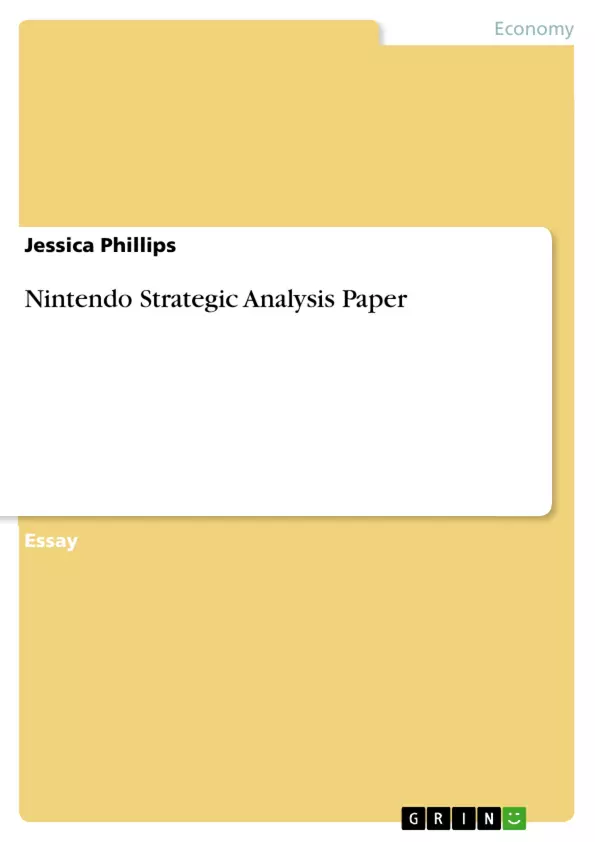Nintendo Corporation was established on September 23rd of 1889 by Fusajiro Yamauchi in Kyoto Japan. The company originally sold hand painted Hanafuda playing cards under the name Nintendo Koppai. Their success in the playing card industry led to them to try other ventures such as ramen noodles, taxi services, short-term “love” hotels and lastly video games. In 1940 Fusajiro Yamauchi died and nine years later his great grandson Hiroshi Yamauchi took over the company at the age of 22. For the next 50 years he led Nintendo to become the video game giant it is. In 1985 Nintendo released the Nintendo Entertainment System (NES) their first home console. In 1989 they released the Gameboy their first handheld device. Though neither item was the first of its kind they still were wildly popular and pushed Nintendo to create newer and better games and consoles. (Gebel, 2019)
Nintendo’s Mission and Vision statement today is lacking. The company is known for their creativity and innovation, but their mission statement is void of that.
“Nintendo of America's Corporate Mission and Philosophy: At Nintendo we are proud to be working for the leading company in our industry. We are strongly committed to producing and marketing the best products and support services available. We believe it is essential not only to provide products of the highest quality, but to treat every customer with attention, consideration, and respect. By listening closely to our customers, we constantly improve our products and services. We feel an equal commitment toward our employees. We want to maintain an atmosphere in which talented individuals can work together as a team. Commitment and enthusiasm are crucial to the high quality of our products and support services. We believe in treating our employees with the same consideration and respect that we, as a company, show our customers.” (Nintendo, 2020)
Table of Contents
- Introduction
- Environment
- Internal
- External
- Strategies
- Conclusion
- References
Objectives and Key Themes
This report presents a comprehensive strategic analysis of Nintendo Corporation, examining its internal and external environments, key strategies, and overall business success.
- Nintendo's historical evolution from playing cards to video games
- Analysis of Nintendo's marketing strategy and competitive advantage
- Exploration of Nintendo's internal environment, including its intellectual property and brand loyalty
- Evaluation of Nintendo's external environment, including its competitive landscape and customer base
- Assessment of Nintendo's long-term and short-term strategic challenges
Chapter Summaries
The introduction provides a brief overview of Nintendo's history, tracing its development from its early days as a playing card manufacturer to its emergence as a global video game leader. It highlights the company's notable achievements, including the release of the Nintendo Entertainment System (NES) and the Game Boy. It also discusses Nintendo's mission and vision statement, highlighting its commitment to product quality, customer satisfaction, and employee engagement.
The chapter on the internal environment delves into Nintendo's marketing strategy, focusing on its commitment to selling high-quality family-friendly consoles, games, and accessories at affordable prices. It also explores the company's competitive advantage, emphasizing its intellectual property and its ability to generate significant profits from its own game development. The chapter highlights Nintendo's strong brand loyalty among customers, a direct result of its ownership of its intellectual property and its unique approach to game development.
Keywords
The core concepts explored in this report include Nintendo's business strategy, marketing tactics, competitive advantage, intellectual property, brand loyalty, customer acquisition, and strategic challenges.
- Citation du texte
- Jessica Phillips (Auteur), 2020, Nintendo Strategic Analysis Paper, Munich, GRIN Verlag, https://www.grin.com/document/955573



